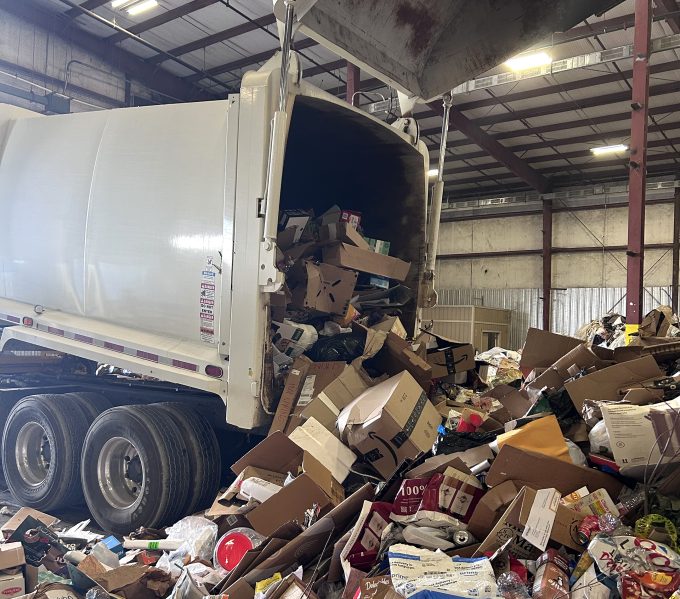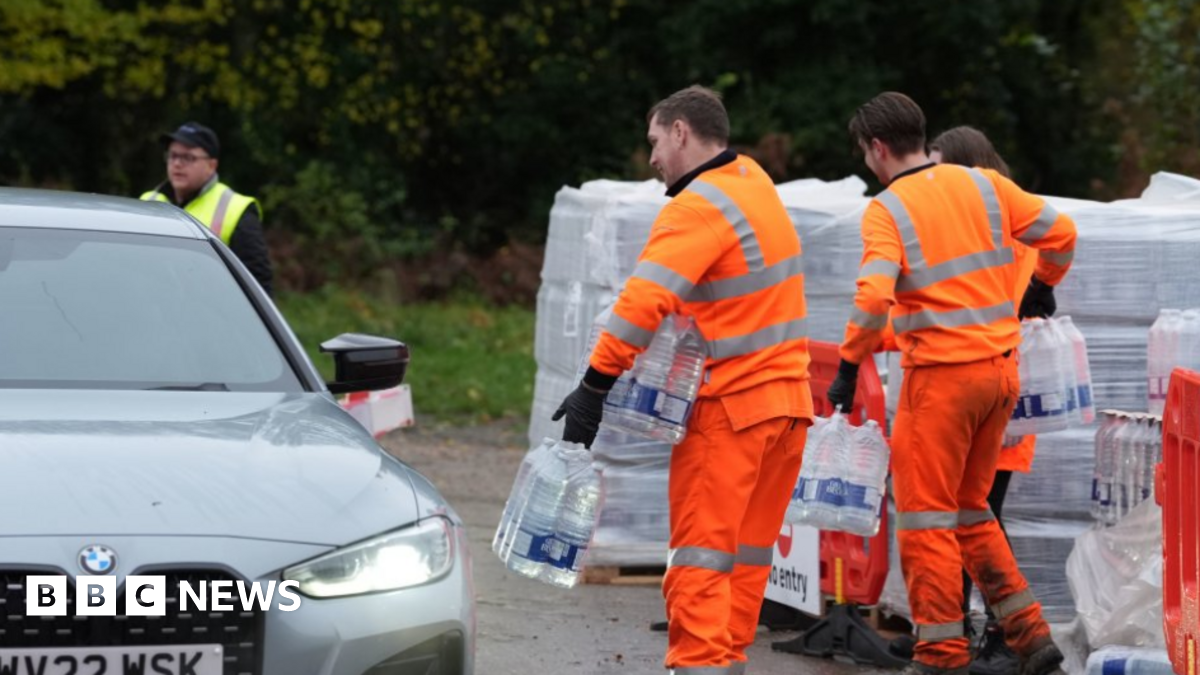City of Longview to issue small rebates for pause in recycling services – Longview News-Journal

Report on Longview’s Waste Management and Sustainable Development Initiatives
Advancements in Municipal Waste Management in Alignment with SDG 11
- The City of Longview has resumed its municipal recycling program, a critical service for achieving Sustainable Development Goal 11 (Sustainable Cities and Communities), specifically Target 11.6 concerning the reduction of the environmental impact of cities through improved waste management.
- Service was temporarily suspended for approximately one year following the loss of the previous processing facility to a fire.
- Operations have recommenced with the opening of the new Northeast Texas Regional Materials Recovery Facility (MRF) in Kilgore.
Financial Transparency and Community Engagement
- In a measure of fiscal responsibility, the city will issue a credit to all sanitation customers for the period of service interruption.
- Each customer will receive a $2.05 rebate on their utility bill, representing the proportional cost savings accrued during the service suspension.
- Account adjustments are being processed and will be reflected in upcoming utility bills.
Strategic Improvements to Support SDG 12: Responsible Consumption and Production
- To enhance the effectiveness of the recycling program and contribute to Sustainable Development Goal 12 (Responsible Consumption and Production), the city has implemented a revised collection schedule. This initiative directly supports Target 12.5, which aims to substantially reduce waste generation through recycling.
- New Schedule Implementation: As of November 3, residential trash and recycling collection occur on separate, consecutive days. For example, a resident with Monday trash collection will have their recycling collected on Tuesday.
- Objective: The primary goal was to reduce the high levels of material contamination (e.g., plastic grocery bags mixed with recyclables) that inhibit the recycling process.
- Reported Outcomes: The strategic change has proven highly successful, yielding significant positive results that advance key SDG targets.
- A measurable reduction in material contamination, ensuring a higher quality of recyclables is delivered to the MRF.
- Increased route efficiency for sanitation crews, contributing to resource optimization and reduced operational emissions, indirectly supporting SDG 13 (Climate Action).
- Consistent delivery of cleaner materials, which is fundamental to a successful circular economy and the objectives of SDG 12.
1. Which SDGs are addressed or connected to the issues highlighted in the article?
The article on the City of Longview’s recycling services connects to several Sustainable Development Goals (SDGs) that focus on urban sustainability, responsible consumption, and resource management.
-
SDG 11: Sustainable Cities and Communities
This goal is directly relevant as the article discusses a core municipal service—waste management and recycling—within the City of Longview. The city’s actions to suspend, restore, and improve its recycling program are efforts to manage urban waste effectively and make the community more sustainable.
-
SDG 12: Responsible Consumption and Production
The entire subject of recycling is central to SDG 12, which aims to ensure sustainable consumption and production patterns. By implementing a recycling program and taking steps to improve its quality (reducing contamination), the city is actively promoting practices that reduce waste and encourage the reuse of materials.
-
SDG 8: Decent Work and Economic Growth
While a secondary connection, this goal is relevant through its emphasis on resource efficiency. The article mentions that changes in the collection schedule led to “cost savings” and “increased route efficiency for our crews.” This demonstrates an improvement in operational and resource efficiency, which is a component of sustainable economic practices.
2. What specific targets under those SDGs can be identified based on the article’s content?
Based on the issues discussed, the following specific targets can be identified:
-
Target 11.6: Reduce the environmental impact of cities
This target aims to “reduce the adverse per capita environmental impact of cities, including by paying special attention to air quality and municipal and other waste management.” The article directly addresses this by detailing the city’s management of its municipal recycling service. The restoration of the service and the efforts to deliver “cleaner, less contaminated recyclable materials to the materials recovery facility” are direct actions toward improving municipal waste management.
-
Target 12.5: Substantially reduce waste generation
This target calls to “substantially reduce waste generation through prevention, reduction, recycling and reuse.” The City of Longview’s recycling program is a clear implementation of the “recycling” component of this target. The strategic changes to the collection schedule to reduce contamination are aimed at making the recycling process more effective, thereby contributing more significantly to waste reduction.
-
Target 8.4: Improve resource efficiency in consumption and production
This target aims to “improve progressively… global resource efficiency in consumption and production.” The article’s mention that the new collection schedule resulted in “increased route efficiency for our crews” directly relates to this target. Improving the efficiency of collection routes means using fewer resources (like fuel and labor hours) to accomplish the task, which is a key aspect of resource efficiency.
3. Are there any indicators mentioned or implied in the article that can be used to measure progress towards the identified targets?
Yes, the article mentions and implies several qualitative and quantitative indicators that can measure progress:
-
Indicator for Target 11.6: Proportion of municipal solid waste managed in controlled facilities
The article refers to the delivery of materials to the “Northeast Texas Regional MRF” (materials recovery facility). The successful collection and processing of recyclables at this facility serve as a direct indicator of waste being managed in a controlled environment. The city’s effort to deliver “cleaner, less contaminated” materials improves the quality and effectiveness of this management.
-
Indicator for Target 12.5: National recycling rate, tons of material recycled
While the article does not provide specific tonnage or recycling rates, it provides qualitative indicators of progress. The statement that changes have resulted in “the consistent delivery of cleaner, less contaminated recyclable materials” implies an improvement in the quality of materials being recycled, which is essential for increasing the effective recycling rate. The reduction of “material contamination” that was “extremely high” is a measurable indicator of the program’s success.
-
Indicators for Target 8.4: Resource efficiency measures
The article explicitly mentions two indicators of improved resource efficiency:
- “Increased route efficiency for our crews”: This is a direct qualitative indicator of operational efficiency.
- “Cost savings”: The article notes that cost savings were accrued while the service was paused, and the rebate of “$2.05 on their utility bill” is a direct financial outcome of these savings. This serves as a quantitative indicator of financial resource management.
4. Create a table with three columns titled ‘SDGs, Targets and Indicators” to present the findings from analyzing the article. In this table, list the Sustainable Development Goals (SDGs), their corresponding targets, and the specific indicators identified in the article.
| SDGs | Targets | Indicators |
|---|---|---|
| SDG 11: Sustainable Cities and Communities | Target 11.6: Reduce the environmental impact of cities, particularly through municipal waste management. | Delivery of recyclable materials to a controlled “materials recovery facility.” |
| SDG 12: Responsible Consumption and Production | Target 12.5: Substantially reduce waste generation through recycling. | Reduction in “material contamination” and delivery of “cleaner” recyclable materials. |
| SDG 8: Decent Work and Economic Growth | Target 8.4: Improve resource efficiency in consumption and production. | “Increased route efficiency” and “cost savings” resulting in a customer rebate of $2.05. |
Source: news-journal.com
What is Your Reaction?
 Like
0
Like
0
 Dislike
0
Dislike
0
 Love
0
Love
0
 Funny
0
Funny
0
 Angry
0
Angry
0
 Sad
0
Sad
0
 Wow
0
Wow
0



















































.jpg.webp?itok=0ZsAnae9#)

























